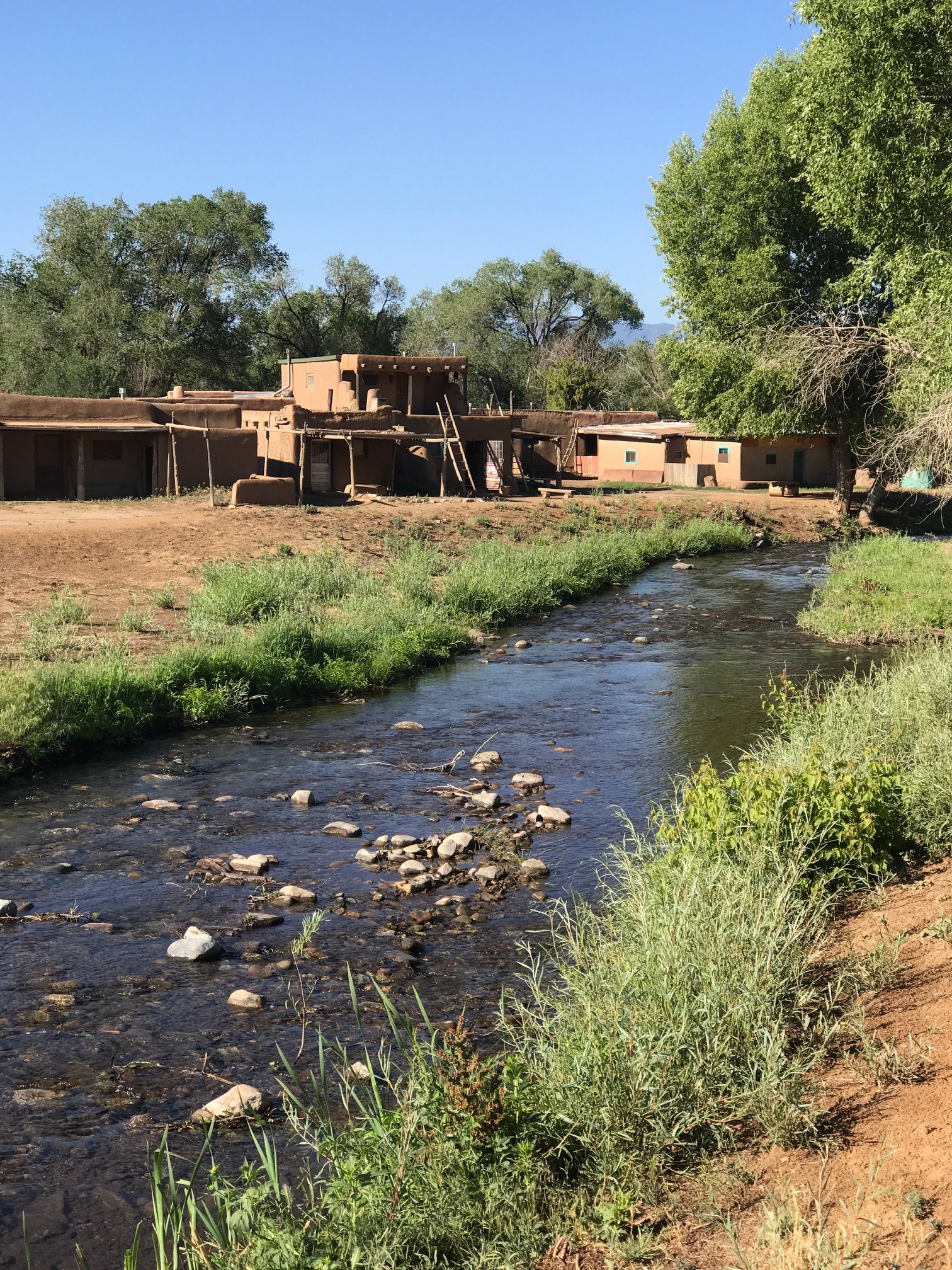We have entered New Mexico, my birth state, the Land of Enchantment. Out in this part of the country the landscape changes with almost every curve as we go between the flat plains and the budding mesas and arroyos that mark the West. I am reminded of a paper I heard that compared Henry James’s rail tour across New Mexico on his way to Los Angeles with Charles Lummis’ tramp across the state. For James the state, its desert and high plains country, was an elsewhere of nothingness; for Lummis it was filled with adventure, with intimate knowledge of the landscape, the people, and the trail. Driving, one might be tempted to take a Jamesian view or a Baudriallardian view of the show outside the movie screen of the windshield. But there are things to see, the ranches, the billboards, the landscape, always the lookout for wildlife—antelope and deer—and the little towns, pueblitos that dot the terrain. Also the trucks and cars you pass, a momentary look over at them to see what their drivers look like.
We took a little traveled road from Tucumcari to Las Vegas, New Mexico, counted 10 cars in 70 miles. A lonely stretch of road. Here and there the entrance to a ranch, a small town without much beyond a post office. It wasn’t until we approached Las Vegas that we even saw signs about school buses, saw no schools and only one church. The houses in patches along the way were of mixed construction, sometimes all in the same edifice—adobe, wood, metal, mobile home—most poor looking with shivered vehicles in the yard—old pickups and farm equipment. It makes you wonder about the lives people live in these isolated spaces, places with a wide horizon and distant views that surely must beckon and hold people who have lived there for generations.
Finally to Taos and a quick visit to the old town, the artists’ homes and art museums. The security guard at the art museum was quite talkative, telling us about the methods the featured artist used to produce vapor art and then about his ventures in trying to sell Dawson, the ghost town of the place where my granddad worked as a mining engineer and where my mother was born in 1930. I have never been to Dawson and had hoped to visit the region of my mother’s birth, but the fire prevented that. A few years ago, on another trip to Colorado we camped at Sugarite, another old mining town now a state park. Walking about the ruins, reading the descriptions of the buildings and some of the mining and community practices gave me a sense of the life my grandparents must have lived in Dawson. One of the things that struck me, was that medical care was provided to the miners but even with medical excuse the miners were docked in their pay if they missed work.
Visited Taos Pueblo. I feel odd about visiting, sightseeing at someone’s home—some 15 people still live in the old pueblos.But I am really interested in seeing the famed pueblo. The Taos Indians have everything arranged, parking and guided tour by a college student who accepts gratuities. Juan was our guide, an English major with hopes of becoming a journalist.He said that when he was 21 his father made him live in the pueblo one year, without plumbing or electricity. He said that year was rough, probably because he may have needed some grounding that the ancient, simpler ways may have provided. Native vendors had some things for sale; we got some pastries just out of the outdoor oven, the horno; Wally got an apricot pie. I bought a nice malachite ring; the artist said you could tell it was old because the ring part was a bit misshapen. I showed him the turquoise ring mother and daddy gave me, made of 8 pin pieces of turquoise, an older style of stone cutting.He said he could tell mine was old because there was no identifying stamp on the inside.My parents must have given me the ring in the 1960s; I have worn it most of my life, which now makes both the ring and me antiques. I remember when we lived in the Virgin Islands in 1964-65 that I would show this ring to friends, most of whom hailed originally from the East Coast, and tell them some wild story about my Indian boyfriend who used to ride his horse to visit me.They believed it. I was admiring some of the very small bracelets for sale, saying they would be too small even for my wrist (which is quite small). The artist told me that they are children’s bracelets; when his son was born he got him a bracelet of turquoise, since turquoise is the stone that has protective powers for boys.Coral is the stone for girls.










